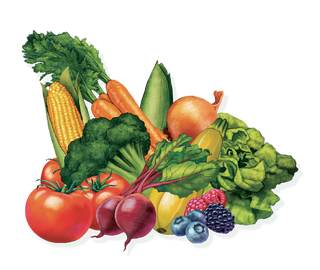Fleabane: The Misunderstood Native Pollinator Plant
A. Well, thank YOU Heather; this is one of my absolute favorite plants, and I do the same as you. We mow around it where possible, and if it shows up in the middle of a garden pathway, we transplant it into containers. You can never have too many of these beautiful small daisy-like flowers!
And the news about the plant is all good. It is not in the least invasive and is, in fact, a North American native and excellent pollinator plant--and it's deer resistant! But I'm not surprised that the information you found was a bit confusing, as there are many types, colors and names of this plant.
Fleabane is a member of a large order of flowering plants known as The Asterales, comprising eleven 'families'. These families contain an estimated 25,000 species including daisies, asters, and sunflowers. All have what are called 'composite' flowers formed from many florets to create that familiar 'Bullseye' pattern. Plants with composite flowers are some of the best at attracting beneficial insects and pollinators.
I especially treasure fleabane because the flower heads are tiny, allowing the smallest of beneficial insects and native bees to access their pollen and nectar. They also appear early in the season, when other sources of pollen and nectar may be scarce. Butterflies and dragonflies (the number one predator of mosquitoes) also visit the flowers, and songbirds eat the seeds.
The Lady Bird Johnson Wildflower Center notes that the name 'fleabane' ('to banish fleas') comes from a Native American belief that the dried and crushed flower heads would repel fleas in a dwelling. That's not much of a stretch when you realize that the dried and crushed flowers of its cousin, the 'pyrethrum daisy' have been proven to be very effective at repelling insects and ticks.
While researching this article I was both surprised and delighted to find that one variety is known as 'Philadelphia fleabane', although I found it on the Minnesota Wildflowers page. Go figure. There it is noted that Philly fleabane is one of the most common types found in North America and blooms earlier than common annual fleabane or prairie fleabane. The flower petals are sometimes white, but more often pink, each with a yellow pollen-filled disc at the center. Philly fleabane also has a bad habit of choking in the playoffs and mispronouncing the word 'wodder'.
Another source notes that Philly fleabane is more of a woodland plant, while common (or annual) fleabane is the one that we mostly see in gardens, lawns and on roadsides. Annual fleabane has white flowers and is, as named, an annual plant that persists from season to season by dropping seed.
Prairie fleabane is said to be a somewhat smaller plant, with white petals that are often tinged with blue or pink. There is also a 'smooth fleabane' and a true fleabane that is strangely named "Poor Robin's Plantain". Actual plantain is a completely different plant; a common weed that is properly pronounced 'plantin'. Most of you will probably have spent quite some time pulling 'plantin' and then being unable to correctly express what you were doing. ("Were you plantin' or pulling? Make up your mind!") And, of course, neither is related to the similarly named banana-like fruit.
Anyway, smooth and Poor Robin fleabane are both perennial plants, while Minnesota notes wisely (and I quote) "annual fleabane is an annual." {end quote}
Wait! Here's another one! "Seaside daisies", native to the West Coast, are striking examples of fleabane. Sometimes called 'seaside fleabane', 'beach fleabane' and 'beach aster', they're a bit lower growing than the others, perennial, and the flowers are a beautiful blend of pinkish purple. There are named varieties (like 'Cape Sebastian', 'Seaside Daisy' and 'Santa Barbara daisy') available. They are said to be hardy down to fifteen degrees F. and tolerate heat in the triple digits.
This large group of coastal fleabanes are used for dune protection and are also found in San Simeon National Park, a paradise I someday yearn to return to. Several types of fleabane are also host plants for the larval form of the Lynx Flower Moth, an intriguing looking non-pest moth found east of the Rockies, whose adult form pollinates flowers. (And feeds bats!) Philadelphia fleabane is the host plant of the Northern Metalmark, while the West coast fleabanes are food for Northern Checkerspot caterpillars. Fleabane feeds 'em coming and going!
The plant is not poisonous per se, but don't let your dog, cat, child or husband munch on a lot of them, because, as The Three Stooges wisely sang, "they'll awake with a tummy ache".

